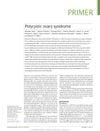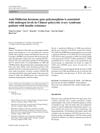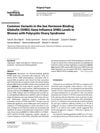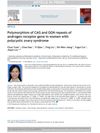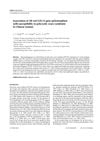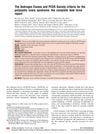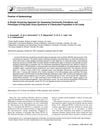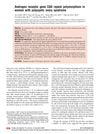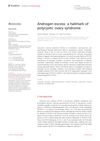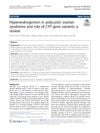Genetics and Epigenetics of Polycystic Ovary Syndrome
October 2023
in “
IntechOpen eBooks
”

TLDR Genes and epigenetic changes are important in the development of Polycystic Ovary Syndrome.
Polycystic Ovary Syndrome (PCOS) is a multifactorial disorder affecting 5-20% of women globally, characterized by hyperandrogenism, ovulatory dysfunction, and polycystic ovarian morphology. The document discusses the role of genetic and epigenetic factors in PCOS, identifying over a dozen candidate genes/loci associated with the disorder. These genes are involved in various pathways including ovarian and adrenal steroidogenesis, gonadotropin action and regulation, steroid hormone effects, insulin action and secretion, chronic inflammation, and energy homeostasis. Specific gene variations, such as those in the CYP11A1 and CYP17 genes, have been linked to testosterone levels in PCOS patients. The document also highlights the role of low Sex Hormone Binding Globulin (SHBG) levels in causing hyperandrogenic symptoms and the association of specific SHBG variants with PCOS susceptibility. Epigenetic changes, such as differential methylation, also play a significant role in PCOS, with thousands of differentially methylated CpG sites and differential transcripts identified in the ovaries of PCOS patients. These findings could help in better understanding PCOS and improving its clinical management.

